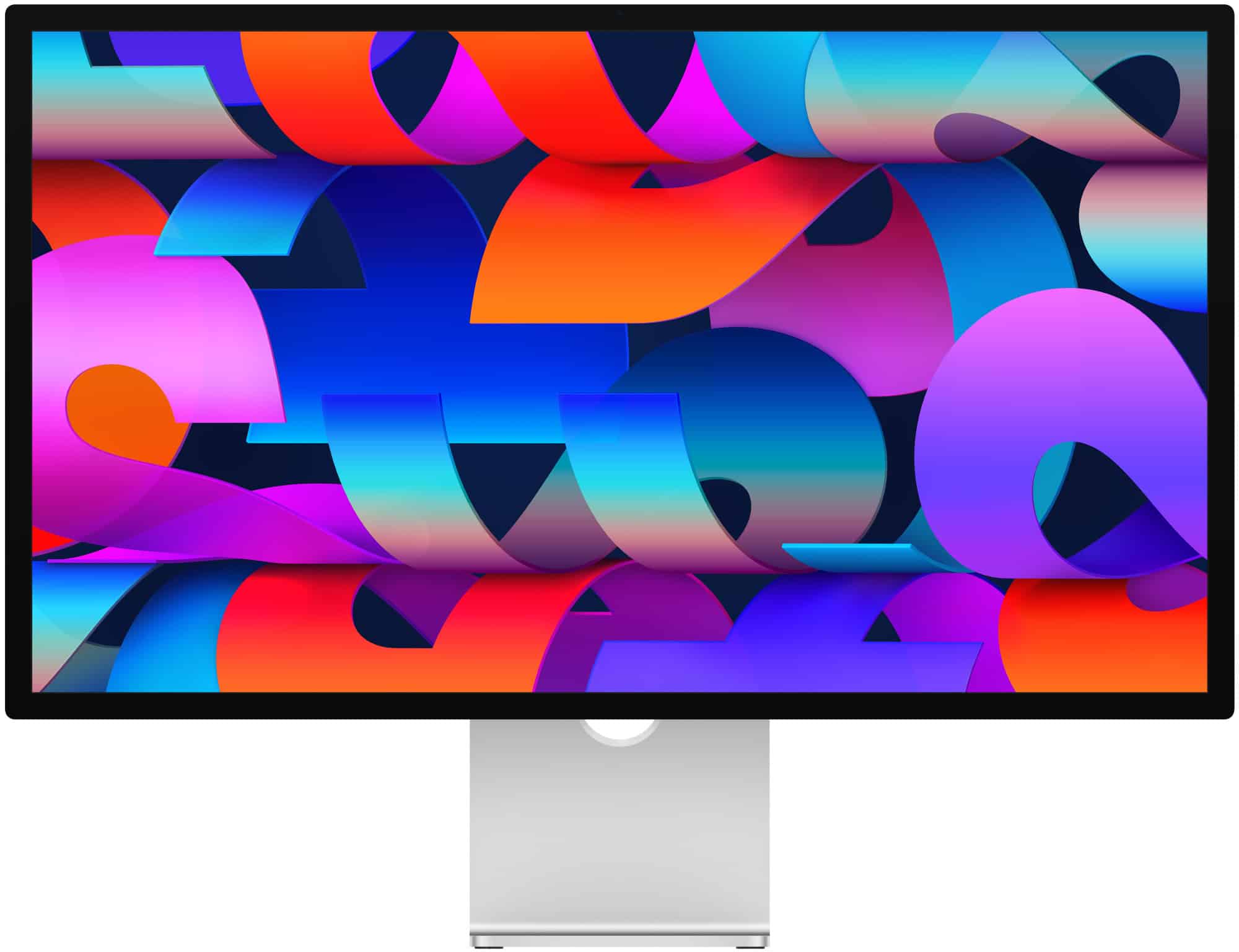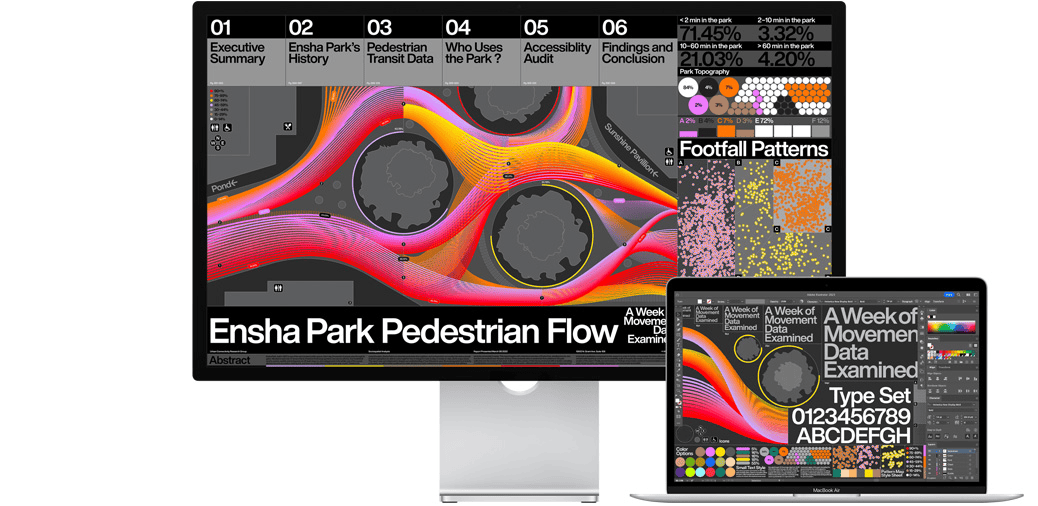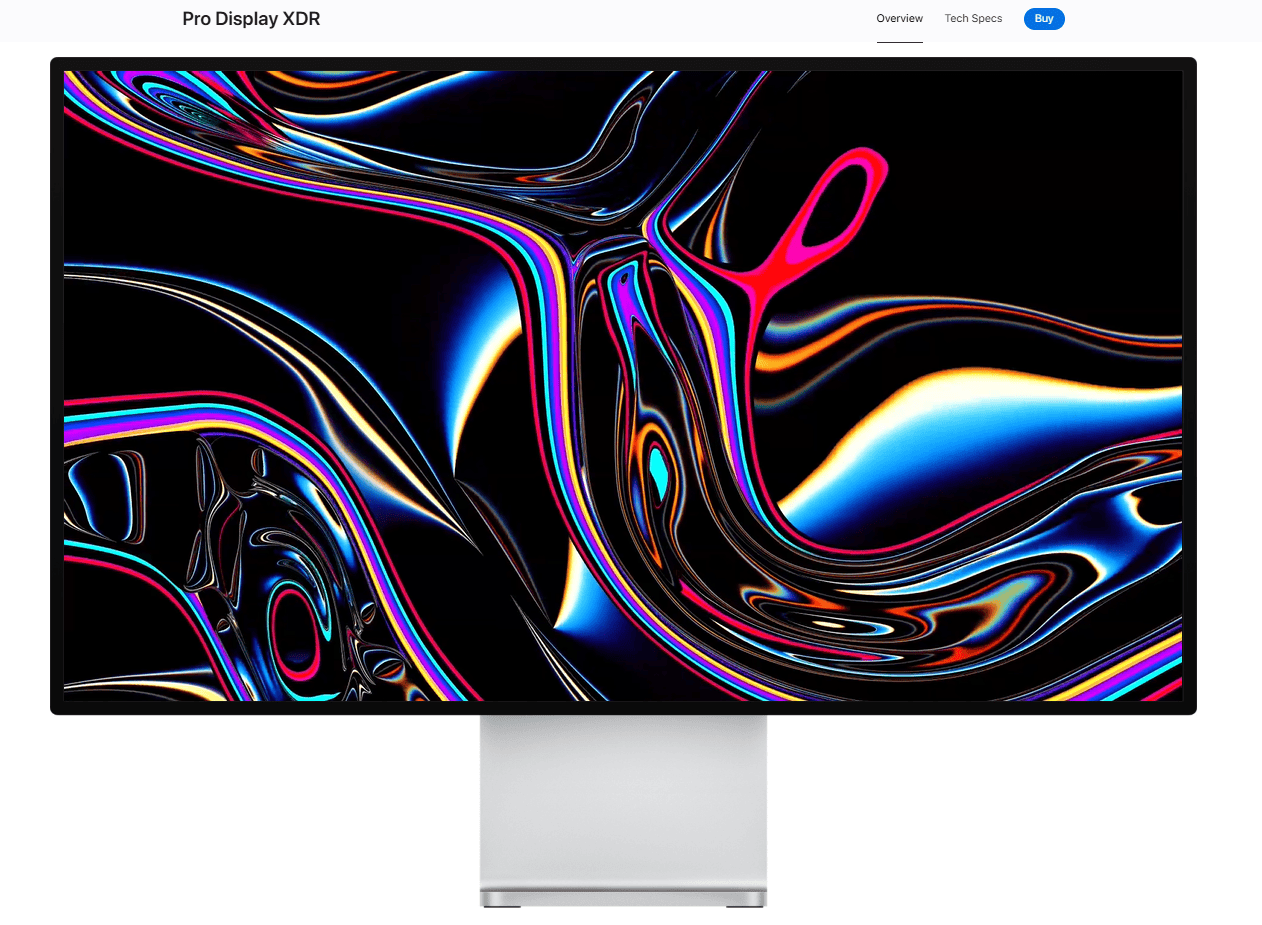When choosing between Apple’s Studio Display and the Pro Display XDR, professionals and general users alike have distinct options for their Mac setups. The Studio Display brings familiar design cues from Apple’s modern iMac lineup and packs a 27-inch screen with 5K resolution. With its A13 chip, it also offers features like Center Stage for the built-in camera, enhancing video calls by automatically adjusting the frame to keep participants centered. On the other hand, the Pro Display XDR aims at the higher end of the market. Released in 2019, it boasts a larger 32-inch 6K Retina display and targets professionals who require extreme brightness and contrast for tasks like HDR content editing.
The differences are in the details. The Studio Display’s built-in six-speaker sound system and its screen, which resembles that of a 2021 iMac, are fine for standard office or design work. Conversely, the Pro Display XDR offers a peak brightness of 1600 nits for superior HDR capabilities, which is crucial for high-end professional workflows. Price is another major consideration as the Pro Display XDR sits at a significantly higher price point than the Studio Display, reflecting its specialized application.

Each monitor serves its purpose well. The Studio Display integrates into any Mac ecosystem with ease and appeals to professionals and casual users whose work does not demand the pinnacle of screen technology. The Pro Display XDR, with its focus on exceptional brightness and the ability to handle HDR content, gears towards a niche of professionals in video and photo production who need the most advanced display technology.
Apple Studio Display vs. Pro Display XDR: Choosing the Right Display
Apple offers two premium external displays: the Studio Display and the Pro Display XDR. While both deliver exceptional visuals, they cater to different needs and budgets. This comparison will help you determine which display is the right fit for you.

Key Differences
- Resolution and Size:
- Studio Display: 27-inch 5K Retina display (5120 x 2880)
- Pro Display XDR: 32-inch 6K Retina XDR display (6016 x 3384)
- Brightness and Contrast:
- Studio Display: 600 nits sustained brightness, 1200:1 contrast ratio
- Pro Display XDR: 1000 nits sustained brightness (1600 nits peak), 1,000,000:1 contrast ratio
- HDR Support:
- Studio Display: No HDR support
- Pro Display XDR: Supports HDR with a wider color gamut and higher dynamic range
- Reference Modes:
- Studio Display: Limited reference modes
- Pro Display XDR: Extensive reference modes for specific professional workflows (photography, video editing, etc.)
- Design and Features:
- Studio Display: Slim aluminum design, built-in 12MP ultrawide camera with Center Stage, six-speaker sound system with spatial audio
- Pro Display XDR: Larger display with a unique lattice cooling pattern on the back, optional nano-texture glass, no built-in camera or speakers
- Price:
- Studio Display: Starting at $1599
- Pro Display XDR: Starting at $4999 (stand sold separately)
Target Audience
- Studio Display: Ideal for general users, creative professionals, and those seeking a high-quality display for everyday tasks, photo editing, and video consumption.
- Pro Display XDR: Geared towards professional users with demanding workflows in HDR video editing, color grading, and visual effects who require the highest level of accuracy and performance.
Here’s a table summarizing the key differences:
| Feature | Apple Studio Display | Apple Pro Display XDR |
|---|---|---|
| Resolution | 5K (5120 x 2880) | 6K (6016 x 3384) |
| Size | 27-inch | 32-inch |
| Brightness | 600 nits | 1000 nits (1600 nits peak) |
| Contrast Ratio | 1200:1 | 1,000,000:1 |
| HDR | No | Yes |
| Reference Modes | Limited | Extensive |
| Camera | 12MP ultrawide with Center Stage | None |
| Speakers | Six-speaker system with spatial audio | None |
| Price | Starting at $1599 | Starting at $4999 (stand sold separately) |
Making the Decision
If you need a high-quality display for everyday use and creative work, the Apple Studio Display is an excellent choice. It offers a stunning 5K resolution, a sleek design, and useful features like a built-in camera and speakers.
However, if your work demands the utmost in color accuracy, brightness, and HDR support, and you have the budget for it, the Pro Display XDR is the professional-grade option.
Consider your needs, budget, and the specific requirements of your workflow to determine which display best suits you.

Key Takeaways
- The Studio Display features a 27-inch 5K screen suitable for general work and casual professional use.
- The Pro Display XDR provides a 32-inch 6K display with advanced brightness for professional HDR content creation.
- Price and specialized features make the Pro Display XDR the higher-end option when compared to the more accessible Studio Display.
Technical Specifications and Performance
Comparing the Apple Studio Display and the Pro Display XDR highlights differences in several areas including screen resolution, brightness, audio-visual features, connectivity, and design.
Resolution and Screen Quality
The Apple Studio Display features a 27-inch 5K Retina display with a resolution of 5120 x 2880 pixels, offering sharp images and a wide P3 color gamut. In contrast, the Pro Display XDR boasts a larger 32-inch 6K Retina display with a 6016 x 3384 pixel resolution, providing even greater image quality and detail. Both monitors support the sRGB spectrum and are designed to deliver color accuracy for professional use.
Brightness and HDR
Pro Display XDR stands out with a peak brightness of 1600 nits and the ability to support high dynamic range (HDR) content, including HDR10 and Dolby Vision. This makes it suitable for professional HDR content editing. Meanwhile, the Studio Display has a more modest 600 nits brightness and does not offer the same level of HDR support.

Audio and Camera Features
Both monitors are equipped with high-fidelity speakers and studio-quality microphones that enhance audio for video calls and media playback. The Apple Studio Display has a 12MP Ultra-Wide camera with Center Stage, automatically adjusting to keep users in view during video calls. The Studio Display’s audio is further enriched by Spatial Audio, which creates an immersive sound experience.
Connectivity and Ports
Connectivity-wise, the studio displays feature multiple USB-C ports and at least one Thunderbolt 3 port, providing high-speed data transfer and the ability to charge devices, including MacBooks. Pro Display XDR offers similar connectivity options and can serve as an external monitor for various Mac products like the Mac Studio, MacBook Pro, iMac, and Mac Pro.
Physical Design and Ergonomics
Both monitors provide options for a stand or VESA mount adapter. The Studio Display comes with a tilt-adjustable stand included, while Pro Display XDR gives buyers a choice between the Pro Stand and a VESA mount, with the former allowing for height and tilt adjustments and even screen rotation. Each monitor’s stand options reflect the high premium placed on ergonomics and user comfort. However, the Pro Stand is a separate purchase for the Pro Display XDR buyers. Design elements such as slim bezels are consistent across both displays, ensuring they look modern and sleek in any setting.







